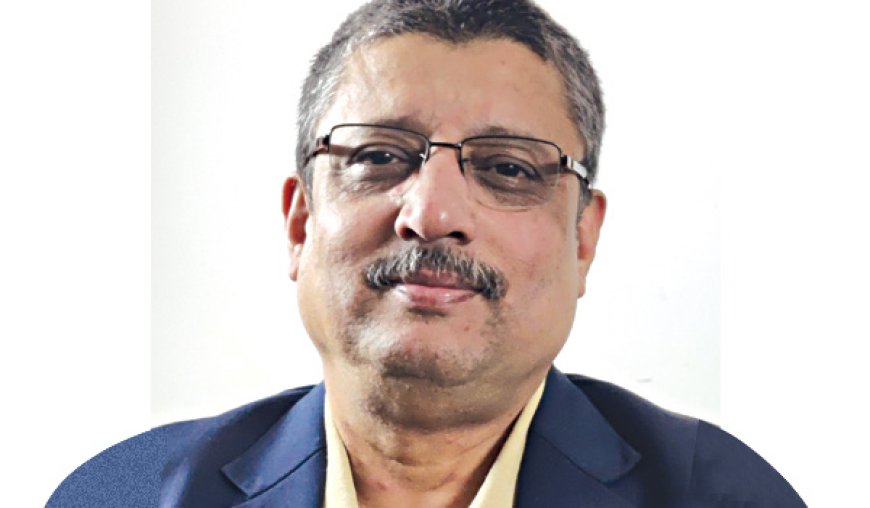Our latest product marks a significant shift in perspective, focusing on optimizing the overall cost of owning a product.
Apurba Chakraborty, Head Domestic Channel Business, Groz Engineering Tools What is your focus at IME? In our vision, we’re focused on two key elements: first, establishing brand recognition at its grassroots, making it accessible and relatable at every level. Second,

What is your focus at IME?
In our vision, we’re focused on two key elements: first, establishing brand recognition at its grassroots, making it accessible and relatable at every level. Second, we pride ourselves on Groz’s heritage of innovation. As a company with over 45 years of experience, innovation has been the cornerstone of our strength. Ultimately, we steer clear of viewing pricing as a mere ‘no-brainer’ in business; instead, we believe in the value of our innovations and the unique propositions we offer.
What are your products that are displayed and have you launched any products?
Our latest product VGP-Q marks a significant shift in perspective, focusing on optimizing the overall cost of owning a product. It’s not just about the initial purchase cost; it’s about understanding the comprehensive expenses associated with ownership. Consider this: how frequently do you charge your phone? Beyond the visible price tag, there’s an intangible cost—electricity. In a similar vein, our product, named VGP, embodies both a branded and generic identity, much like how ‘Fridge’ is synonymous with ‘Refrigerator’ or ‘Dalda’ is associated with vegetable oil.
In the realm of lubrication equipment, VGP stands as a unique hybrid—a term that bridges Groz’s brand and a standard 6kg lubrication bucket. Let’s delve into the cost dynamics. Traditionally, using a bucket requires a two-person operation: one to manually pump and another to hold the hose for greasing. However, with introduction of VGP-Q we’ve revolutionized this process by introducing a quick-use coupler—a universal fitting compatible with various greasing points across equipment. By integrating this coupler into our product and launching it in the market, we’ve transformed the scenario. Now, a single operator can effortlessly pump and grease the equipment.
Consider the cost analysis: while the consumer price stands at 3500 (MRP around 6350, retailing roughly at 3500-4500), even with a slight additional cost compared to competitors (let’s say 500 rupees), the annual expense translates to about 6000 rupees. Now, juxtapose this against the savings achieved by eliminating the need for at least one laborer, typically costing no less than 5000 rupees per month. The ratio between the two—6000 rupees against the unseen but existent 60000 rupees—highlights the substantial benefits of our innovation.
Excitement surrounds our product’s launch as we’ve conducted extensive test marketing, engaging over 150 distributors. Leveraging our extensive 40-year-old network, our go-to-market strategy has swiftly gained traction. Feedback from retailers and consumers alike underscores the innovation embedded in what might seem like a simple, vanilla product. This innovation significantly amplifies our brand’s value proposition and exemplifies where Groz stands in the market.
That encapsulates the essence of Groz and our groundbreaking product.
You said about cost and quality. How do you maintain this equilibrium between cost and giving quality?
Let’s approach this from a different angle. Consider the threshold cost, the baseline expense tied directly to the number of units. Once I hit that mark within my budgeted cost, anything beyond becomes extra. By adding incremental costs and expanding the threshold, I gain significantly more traction in the market in absolute terms. I’m offsetting that added expense by exploring whether usage and market penetration can increase with an innovative product. Say I’m currently selling 20,000 buckets—could I push that to 25,000, a direct 25% growth? Yet, in terms of cost versus sales, the incremental cost doesn’t necessarily rise by 25%. This isn’t an R&D cost; rather, it involves existing components creatively merged into an innovative product. For instance, think about someone suggesting to bottle coconut water. We executed it using existing bottles and coconuts, merging them to create a transferable product. Where coconut water might be popular in Kerala, we’re taking it to the deserts of Rajasthan. That’s the essence of what we’re doing.
How do you look at platforms like IME providing so much networking and especially what is your response for IME this year?
This year has proven fruitful thus far. We’ve seen a significant surge in inquiries regarding our channel partnerships, a crucial aspect for us. Expanding our network of channel partners directly translates to increased business opportunities. For me, participating in exhibitions isn’t solely about showcasing products; it’s about establishing a sustainable platform where we connect with the right people, fostering enduring relationships founded on a long-term vision.
It’s not merely a transactional interaction where you buy a product and leave. What holds greater significance to me is the synergy created when two companies join forces at a brand and company level. This association, the interlinking of values and goals between your company and mine, holds far more value than a mere exchange of promotional items for the sake of selling products.
Are there any markets you have given your mind to?
I primarily focus on domestic operations, limiting my availability for international discussions. In India, our approach has evolved significantly. We’ve navigated through phases of uncontrolled and controlled distribution. My background at Phillips is deeply rooted in hardcore distribution.
Controlled distribution has led us to specific towns—Cat A and Cat B—and now, we’re delving further. We’re aiming at populations of 1 lakh or 50,000, devising strategies to penetrate these markets in a controlled fashion. Presently, you’ll find our products in these markets, primarily through our wholesale route. However, in wholesale hubs like Delhi, Mumbai, or Hyderabad, price is the driving force. The challenge arises beyond the wholesalers; we lack insight into the end consumers.
Our vision is to bridge that gap. We are resolute about expanding rapidly in India not just in percentages but in tangible figures—X—considering India’s significant growth trajectory. It’s an opportune moment to tap into these markets, and we’re fully prepared to make our mark.
Hits: 9








